What lies beneath Davis Bottom? Dr. Tanya Faberson, Principal Investigator, Cultural Resource Analysts, Inc. is leading an archaeological investigation into Davis Bottom that began in 2003. The investigation is part of the mitigation plan for the Newtown Pike Extension Project, a roadway impacting significant portions of this small, working-class neighborhood southwest of downtown Lexington. Dr. Faberson’s research is designed to “locate, describe, evaluate, and make appropriate recommendations” about sites threatened by roadway construction (Faberson 2006). While most of the archaeological sites in Davis Bottom were disturbed by decades of flooding and construction, archaeologists discovered some intact features, including two privies behind shotgun homes on DeRoode Street.
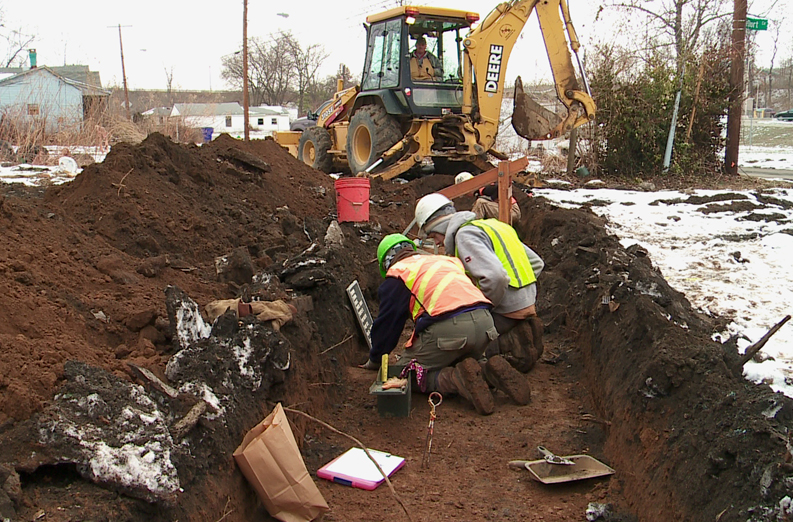
Figure 1: Archaeologists document wood-pier posts uncovered at the site of two homes at 710 and 712 DeRoode Street on December 29, 2010.
The scientific research conducted in Davis Bottom provides a fascinating case study about the challenges, methods and value of historic archaeology in urban centers. Here are summaries of the archaeological investigation, including selected images and links to professional reports.
Archival research
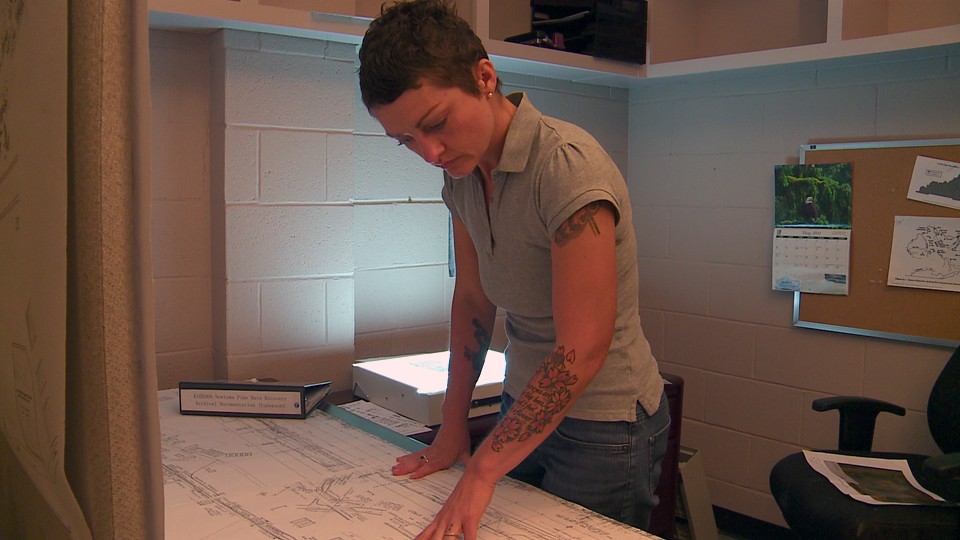 Archaeological investigations begin with archival research to better understand the history of a site and to plan fieldwork. Dr. Tanya Faberson compiled archival maps, documents, newspaper articles, deeds and photographs into her archival report, Davis Bottom: Residential Transformations of a Neighborhood on the Periphery, Vol. 1. This report contains fascinating information about the history of Davis Bottom, as well as detailed accounts about many individual homes.
Archaeological investigations begin with archival research to better understand the history of a site and to plan fieldwork. Dr. Tanya Faberson compiled archival maps, documents, newspaper articles, deeds and photographs into her archival report, Davis Bottom: Residential Transformations of a Neighborhood on the Periphery, Vol. 1. This report contains fascinating information about the history of Davis Bottom, as well as detailed accounts about many individual homes.
Figure 2: Tanya Faberson examines archival maps of Davis Bottom.
Professional report (PDF): An Archival History of the Proposed Newtown Pike Extension – Small Area Development Plan, City of Lexington, Fayette County, Kentucky (Item No. 7-593.00). “Davis Bottoms: Residential Transformations of a Neighborhood on the Periphery, Vol. 1,” by Tanya A. Faberson, Ph.D., RPA, with contributions by Loti O’Conner, Amanda Graham, and Jennifer Haney, RPA; Contract Publication Series 06-040, Cultural Resource Analysts, Inc., August 22, 2006.
Fieldwork
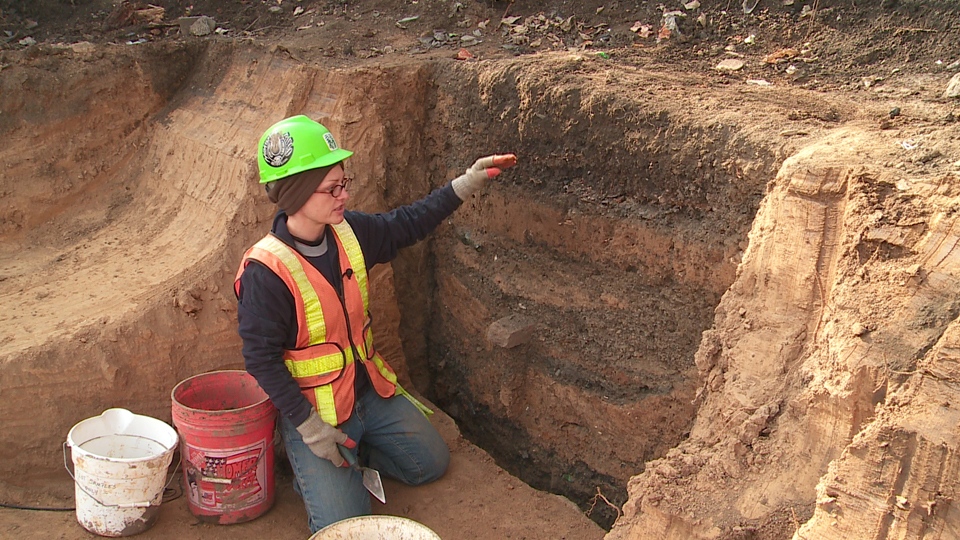 In 2010, archaeologists uncovered two intact privies behind shotgun homes on the southeast side of DeRoode Street. Privies, often filled with artifacts, are an important feature for historic archaeologists. “Archaeology can address everyday life,” says Dr. Faberson, “and that’s what we want to know about.” Learn why the discovery of wood-post piers sheds light on how residents coped with flooding in low-lying sections of Davis Bottom.
In 2010, archaeologists uncovered two intact privies behind shotgun homes on the southeast side of DeRoode Street. Privies, often filled with artifacts, are an important feature for historic archaeologists. “Archaeology can address everyday life,” says Dr. Faberson, “and that’s what we want to know about.” Learn why the discovery of wood-post piers sheds light on how residents coped with flooding in low-lying sections of Davis Bottom.
Figure 3: Tanya Faberson describes soil layers in a wood-lined privy.
Fieldwork article (PDF): A summary of the fieldwork conducted in Area 3 in Davis Bottom.
Shotgun house article (PDF): The architecture of shotgun houses in Davis Bottom.
Laboratory Analysis
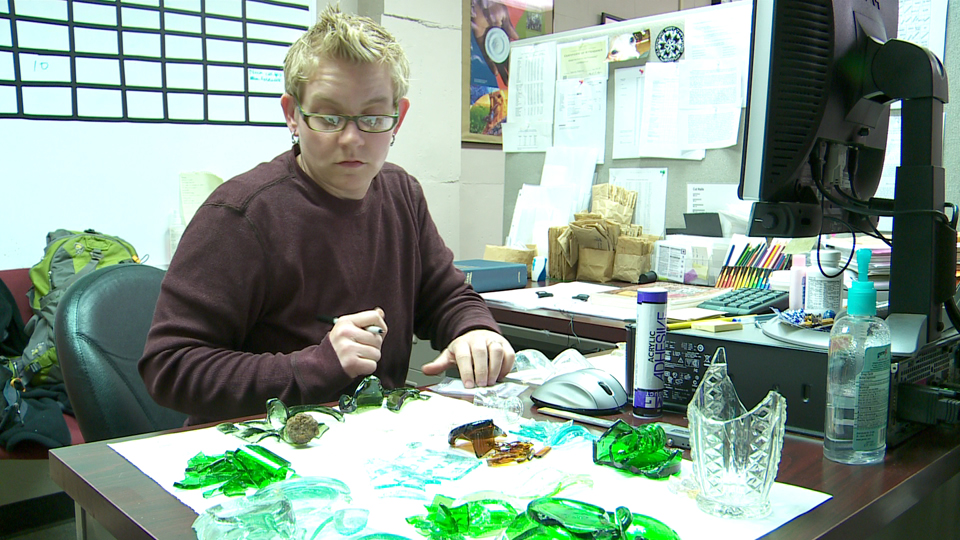 Archaeologists recovered over 38,000 artifacts during fieldwork in Davis Bottom. The artifacts were carefully cleaned, identified and catalogued during laboratory analysis. Jennifer Faberson, Historic Materials Specialist, says the two privies held a wide variety of artifacts dating from the 1880s to 2006. “It just really suggests that the people living there were probably salvaging items and using them over a long period of time,” says Faberson.
Archaeologists recovered over 38,000 artifacts during fieldwork in Davis Bottom. The artifacts were carefully cleaned, identified and catalogued during laboratory analysis. Jennifer Faberson, Historic Materials Specialist, says the two privies held a wide variety of artifacts dating from the 1880s to 2006. “It just really suggests that the people living there were probably salvaging items and using them over a long period of time,” says Faberson.
Figure 4: Jennifer Faberson catalogues glassware from Davis Bottom.
Laboratory Analysis article (PDF): A summary of the laboratory analysis process, including images of artifacts recovered from privies in Area 3 of Davis Bottom.
Findings & Conclusions
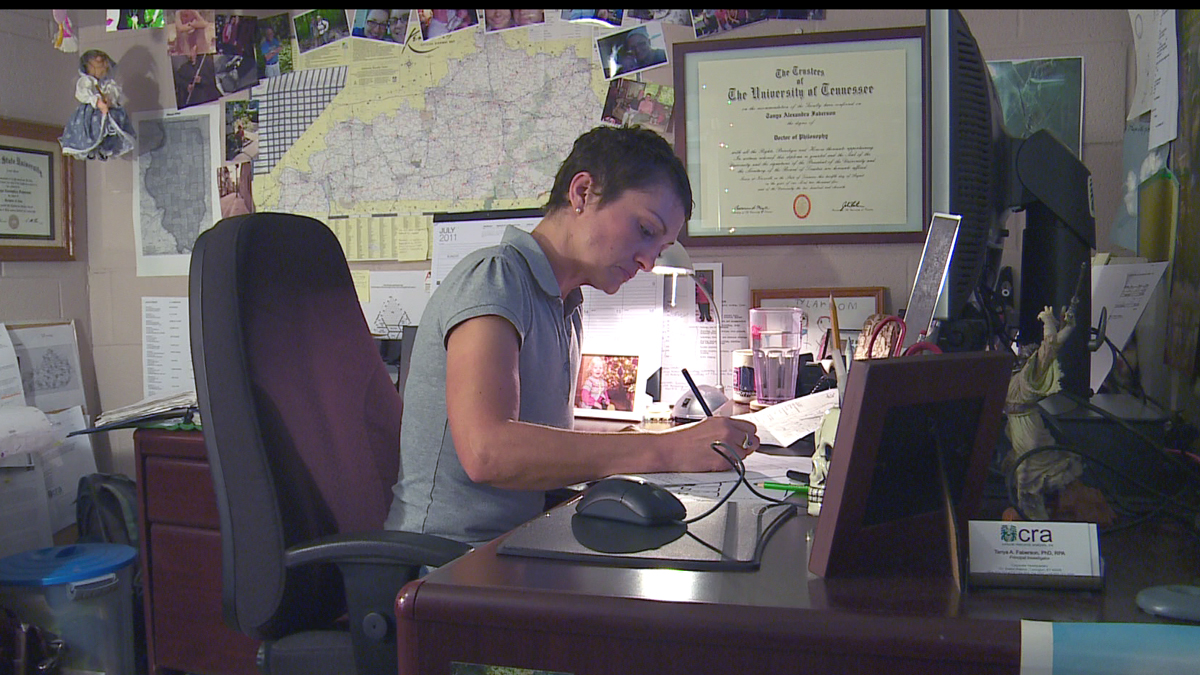 What does archaeology reveal about the daily life of residents in Davis Bottom? Dr. Tanya Faberson is currently writing a detailed final report about her investigations. “We can tell a story, a story about the neighborhood, that we couldn’t do otherwise without having this archaeological data,” says Dr. Faberson. A summary of the archaeological report will be posted on this website after it has been completed and reviewed.
What does archaeology reveal about the daily life of residents in Davis Bottom? Dr. Tanya Faberson is currently writing a detailed final report about her investigations. “We can tell a story, a story about the neighborhood, that we couldn’t do otherwise without having this archaeological data,” says Dr. Faberson. A summary of the archaeological report will be posted on this website after it has been completed and reviewed.
Figure 5: Dr. Tanya Faberson works on her archaeological report
